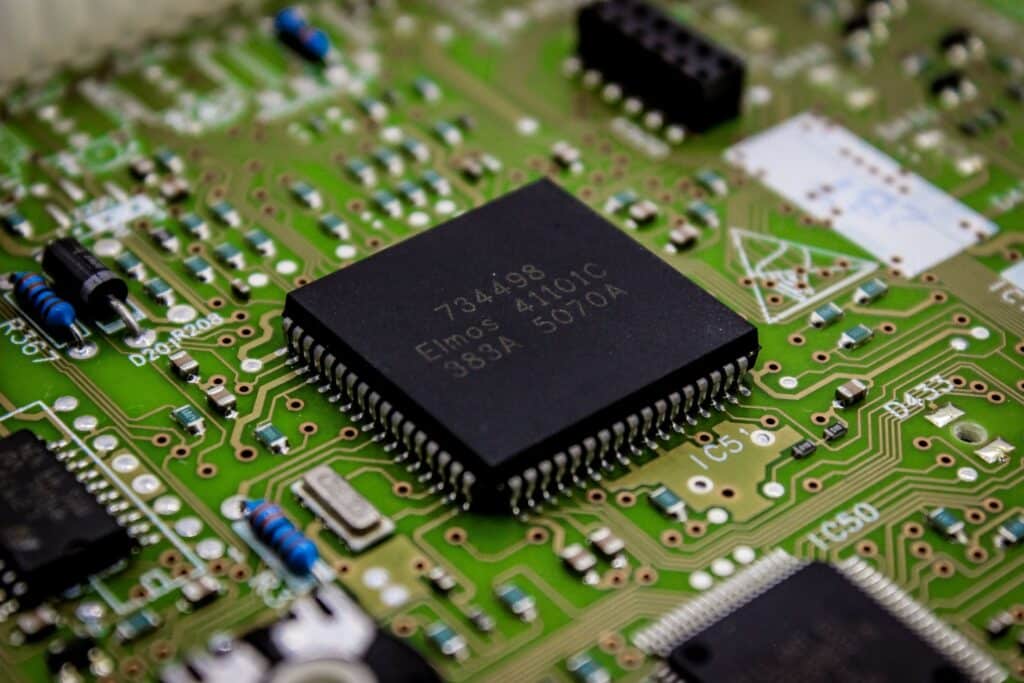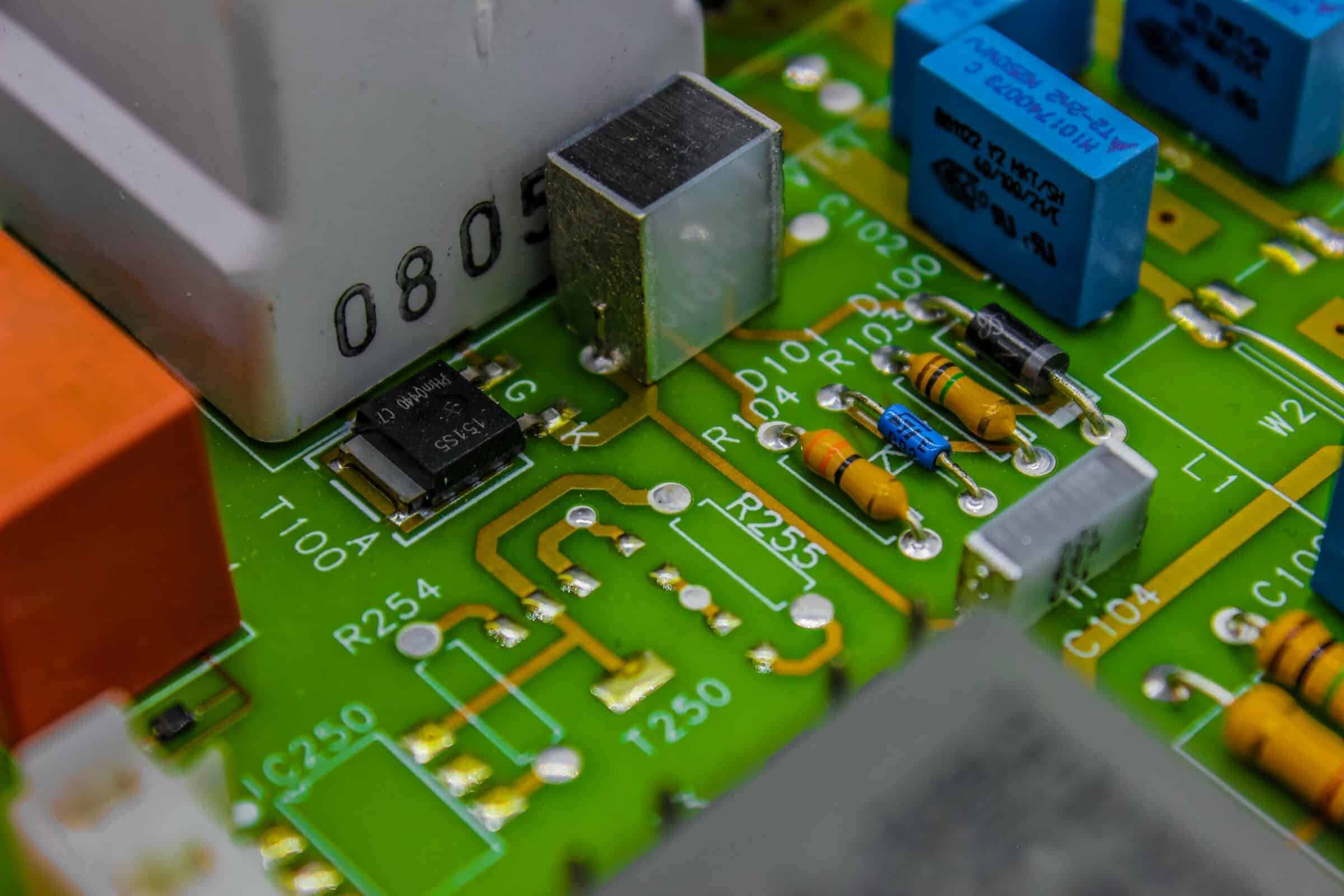A System on a Chip (SoC) is a type of integrated circuit or microchip that contains all the components of a computer or other electronic systems, including processors, memory, input/output interfaces, and other hardware components.
In simple terms, SoC is a complete computer system on a single chip. This single chip system is commonly used in various applications, such as mobile devices, wearable technology, and IoT devices, among others.
In this post, we will look at the advantages of an SoC and how it affects the use case for iSIMs and the Internet of Things (IoT). Please continue reading to find out more.
Why use an SoC?
As technology advances and business operations become more streamlined, efficiency begins to play a key part in any IoT operation. This could mean cutting down on spending costs, material waste, energy waste and space used in a device. Enter SoC.
By compressing down what is typically a multichip onto a single processor, businesses create a portable solution for IoT operations that uses much less power than devices with a discrete Central Processing Unit (CPU).
An SoC will always include a CPU, but some may also feature system memory, graphic processing units, radio modems, or even peripheral controllers for USB storage. These chips are less power-hungry than other, larger chips making them ideal for use in battery-operated devices or applications where energy efficiency is crucial.
Why Use SoC Technology?
One of the most obvious advantages of using SoC is its space efficiency. With traditional multichip systems, physical space is consumed by the individual components and circuit boards; this becomes highly constraining in smaller electronic devices.
SoCs, on the other hand, integrate all the necessary components into a single, compact chip, allowing device manufacturers to create smaller, sleeker, and lighter devices – this is particularly important in space-constrained applications, such as wearables and IoT sensors.
Depending on the required use case, an SoC can be tailor-made and optimised to suit a specific application.
Another significant advantage of using an SoC is that it offers better performance and power efficiency. Their tightly integrated architecture optimises power consumption by allowing individual components to activate and deactivate as the system demands.
This not only plays a key part in increasing the battery life of devices but also reduces their heat generation, enabling sustained and stable operation even under adverse conditions.
The development of SoCs matched with the evolution of SIM form factors has also helped to contribute to devices becoming smaller and more seamless for users. Through SoC technology, wearable technology and smart home devices can drastically decrease in size without compromising on their quality or speed.
This is because an SoC often contains an integrated SIM (iSIM), which helps these devices remain connected with a great user experience despite their miniature size.
Lastly, the optimised design of SoCs allows the chip’s components to communicate faster, increasing the efficiency of the device. This is because all of the necessary components are on one compressed chip, rather than being spread out across a larger multichip system that requires data to travel through longer interconnects.
What Are System-on-a-Chip Systems Used For?
As you may expect, the use cases for SoC are many and varied. It is commonly used in mobile devices, including smartphones and tablets, where the SoC is usually the central component that processes data, manages power, and interfaces with other components.
However, SoC is also used in IoT devices, including smart home sensors, industrial automation, and security systems, among others. In such devices, SoC plays a central role in processing data, interfacing with sensors and other devices, and managing network connectivity.
As mentioned earlier, an emerging use case for SoC is its integration with integrated SIM (iSIM) technology.
iSIM is a new technology that allows the use of SIM card functionalities without the physical presence of a SIM card.
An iSIM is integrated into the SoC of a device, which means that SIM functionalities are directly executed from the SoC. iSIM offers a range of advantages, including a smaller form factor, reduced complexity, and lower manufacturing costs.
To summarise, some of the most notable use cases for SoC include:
- Automobile navigation, communications and entertainment screens
- Avionics systems on aircraft
- Defence electronics, such as high-voltage solid-state transmitters and intelligent autonomous systems
- Electronic Warfare (EW) systems, such as signal sensing, night vision and processing and response systems
- Emergency notification systems and devices
- Miniaturised Internet of Things devices, including a variety of sensors.
- Radiation-hardened space satellite controls
- Smart cell phones, watches, TVs, routers and modems
- Wearable health monitors for patients
- Unmanned Air Vehicles (drones or UAVs), Unmanned Ground Vehicles (UGV) and Unmanned Underwater Vehicles (UUVs)
Pros and Cons of Using SoC for IoT
While combining several components into a single chip provides many advantages, it is essential to consider these against the difficulties presented by a sophisticated design when deciding whether an SoC is the best choice for a device.
Benefits of System on a Chip
- Enhanced Power Efficiency: Utilising SoC technology in IoT devices significantly reduces power consumption, allowing devices to operate longer on a single charge, a critical factor for remote or hard-to-access deployments.
- Compact Device Design: By integrating multiple functionalities onto a single chip, SoCs enable the creation of smaller, more streamlined IoT devices, crucial for applications with space constraints.
- Lower Production Costs: Consolidating various components into a single chip can lead to decreased material costs and simplified assembly processes, resulting in lower overall production costs for IoT devices.
- High Performance: The close proximity of components within an SoC can lead to faster data transfer rates and improved overall device performance, enhancing the user experience and enabling more complex IoT applications.
- Increased Reliability: With fewer parts required to achieve device functionality, the chance of component failure is reduced, leading to more reliable IoT devices that are crucial for critical applications in medical, safety, and industrial fields.
- Easier Connectivity: Integration of connectivity modules directly onto the chip simplifies the process of connecting IoT devices to networks, facilitating easier and more dependable data transmission crucial for IoT ecosystems.
Negatives of System on a Chip
- Single Point of Failure: Since all critical components are integrated into a single chip, the failure of one component can cause the entire device to stop functioning.
- Limited Customisation: The integrated design of System on Chip technology means there’s less flexibility for customising or upgrading individual components, which can be a drawback for IoT applications requiring specific performance characteristics.
- Flexibility: In contrast to traditional SIM cards, eSIMs may not be as flexible in terms of compatibility with different devices or networks, limiting their use for certain IoT deployments.
- Mix of Analog and Digital: SoCs may integrate both analog and digital components, making it challenging to troubleshoot issues or make modifications without specific expertise.
- Complex Troubleshooting: When failures occur, diagnosing and fixing issues within an integrated SoC can be more challenging compared to systems with discrete components, potentially increasing downtime.
Differences Between SoC and CPU
Understanding the distinction between System on a Chip and Central Processing Unit (CPU) technologies is key for businesses working within the telecommunications industry and those about to embark on an IoT journey.
A CPU, fundamentally, is the brain of a device, executing commands and processing data. However, an SoC represents a more integrated approach, combining a CPU with other critical components such as a graphics processing unit (GPU), memory, and connectivity modules (including WiFi and cellular modem) on a single chip.
This integration offers substantial benefits for IoT devices, where space is at a premium and power efficiency is crucial. In telecommunications, an SoC’s compact and efficient architecture enables smaller, more power-efficient devices that can operate longer on battery power, essential for sensors and smart devices spread across vast and often remote areas.
Additionally, integrating connectivity modules directly onto the SoC facilitates more straightforward and robust connections to networks, enhancing the performance and reliability of IoT deployments. This holistic approach embodied by SoC technology not only streamlines device design but also accelerates innovation in the telecommunications sector, paving the way for the next generation of connected devices.
Unlock New Opportunities with IoT
From its cost efficiency and power to its space savings, it’s clear to see the exponential potential of opportunities System on a Chip technology presents in the realm of IoT.
Businesses that decide to utilise the powerful combination of SoC and iSIM technologies can begin to see their processes optimised and streamlined to an extent previously unknown to many industries.
When it comes to achieving the best possible IoT connectivity, Caburn Telecom stands out as the premier choice, boasting vast experience, unparalleled expertise, and a comprehensive range of innovative solutions tailor-made for businesses across diverse sectors.
As an industry leader, Caburn Telecom is committed to unlocking the immense potential of IoT through reliable, efficient and secure connectivity solutions, enabling businesses to thrive in the rapidly-evolving digital landscape.
Contact us to connect with Caburn Telecom today and embark on a journey to explore the endless possibilities that IoT and SoC technology hold for your business.

